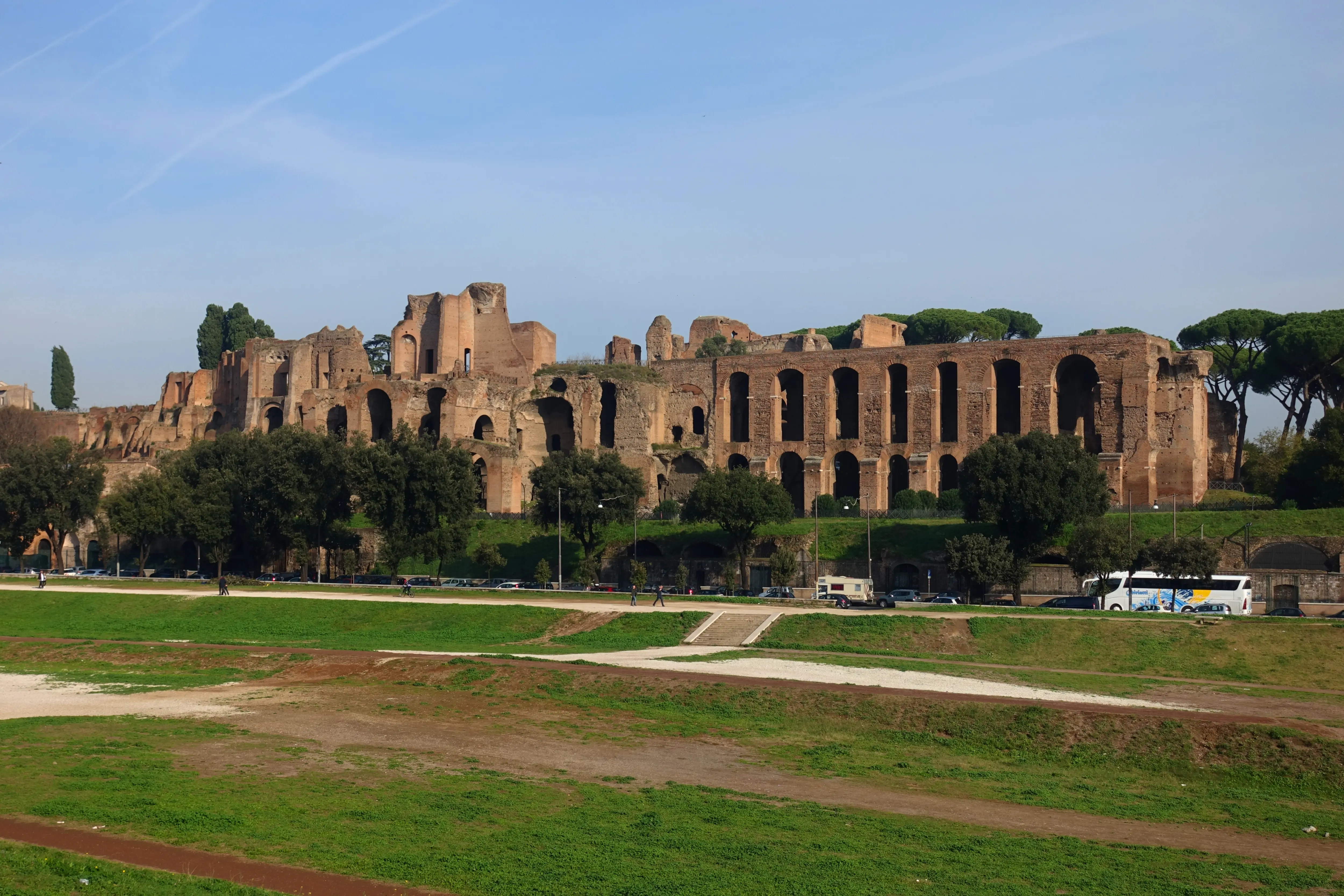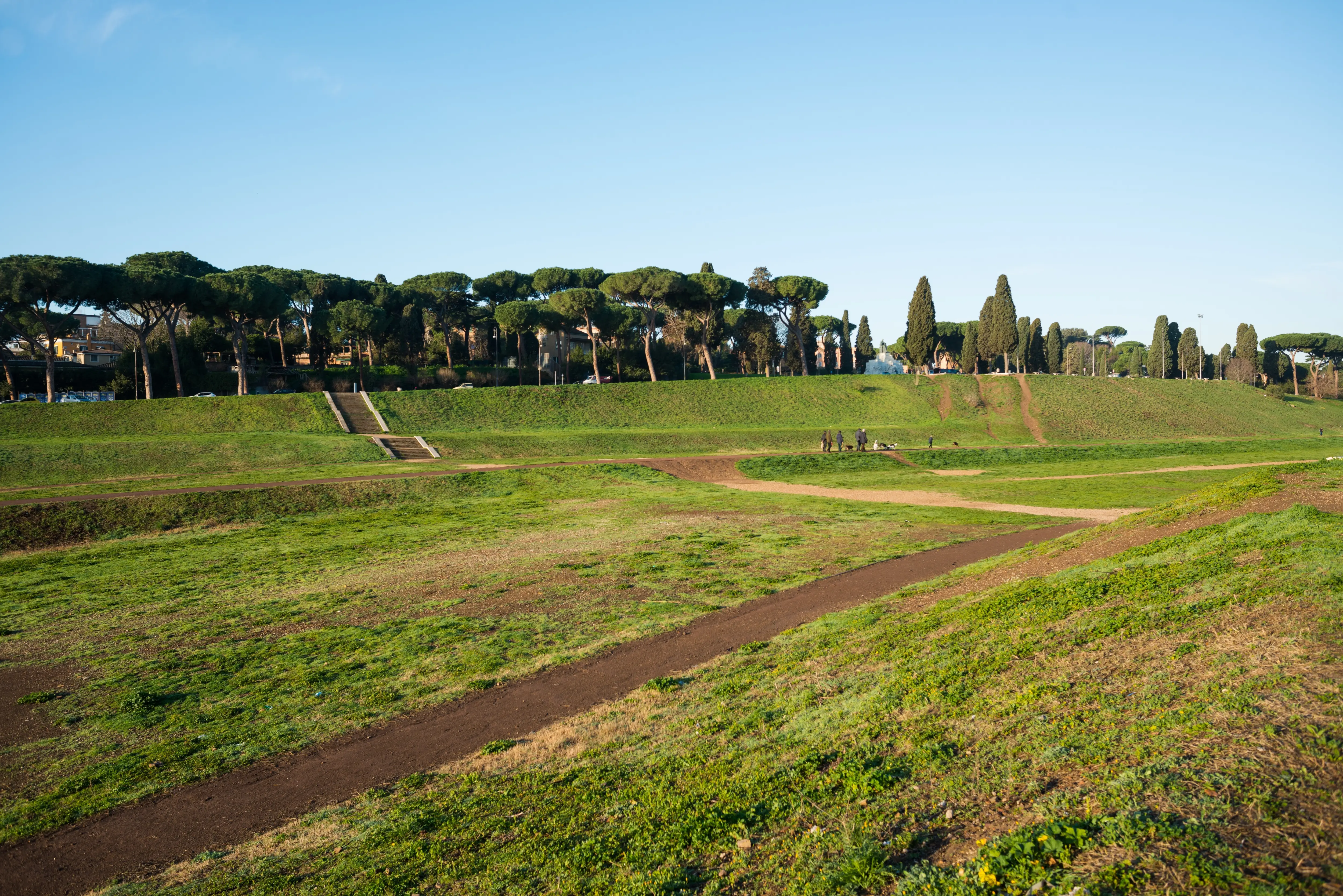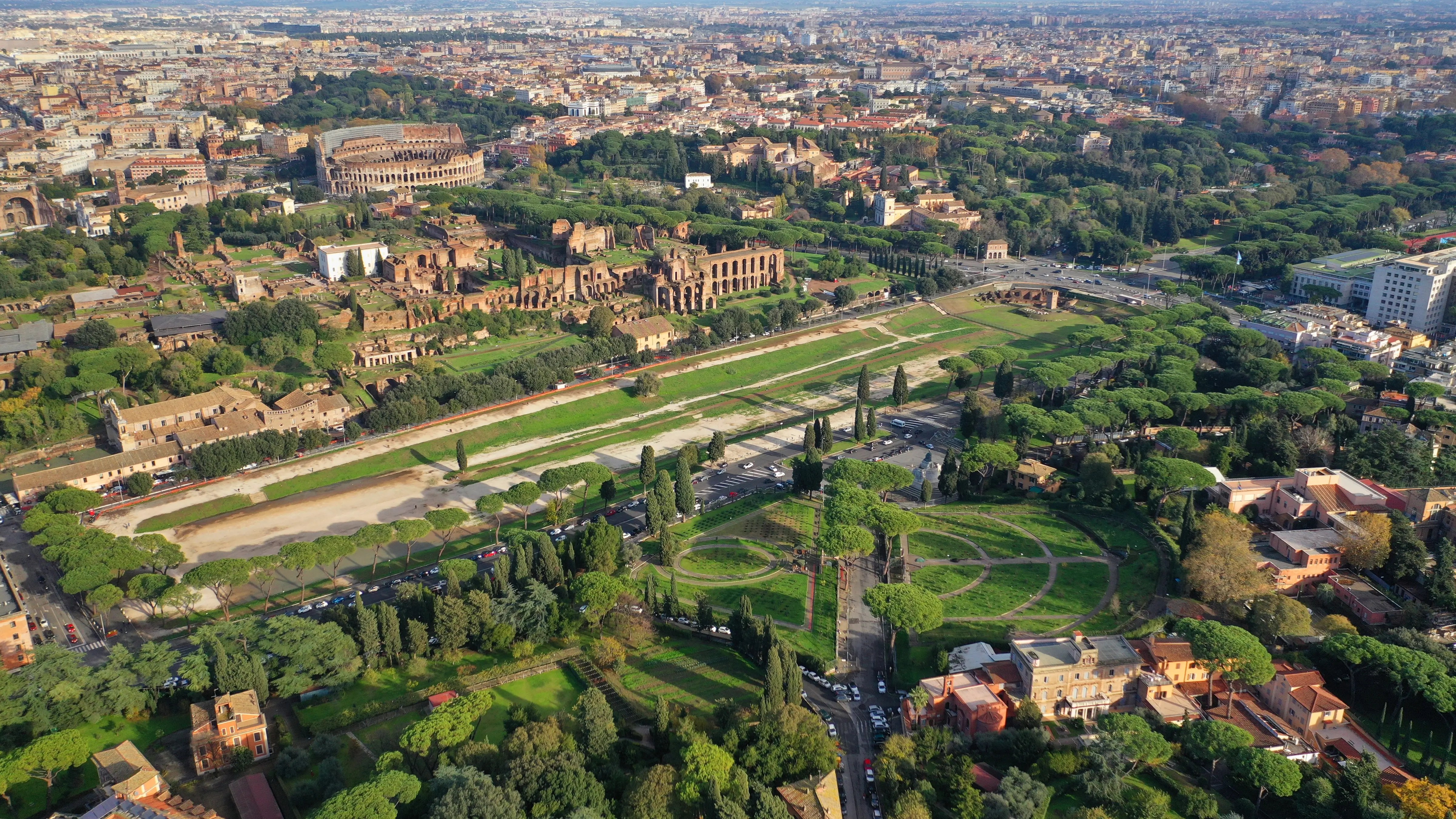Ciao my friends! 💫 Not all of Rome’s grandeur is built sky-high. Some of it rests gently in a valley – wide, windswept, and echoing with the thundering hooves of history. That’s Circus Maximus: a place where time races, pauses, and races again. Tucked between the Palatine and Aventine Hills, this sprawling green field might seem unassuming at first glance. But look again. Close your eyes, breathe in the Roman air, and listen. You’ll hear the roar of 150,000 spectators, the creak of chariots, the cheers of emperors. This isn’t just a park, it’s the oldest and largest stadium in ancient Rome, and one of the most extraordinary historic spaces you can visit today.
🐎 From Myth to Majesty
Legend says it all began with a trick. Rome’s founder, Romulus, held a grand festival here to lure the neighboring Sabines, and then seized their women to populate his new city. This dramatic tale of love and power may be myth, but what’s certain is that by the 6th century BCE, the space had already become Rome’s favorite entertainment venue.
The Circus Maximus hosted chariot races, athletic games, animal hunts, gladiator battles, and public celebrations for centuries. It was longer than six football fields and could seat an estimated 150,000 to 250,000 people, far more than the Colosseum. Here, sport met spectacle. Victory wasn’t just a matter of speed, but of honor, family, and often, politics.
Today, only faint traces of the original marble and brick remain. But the shape of the circus, the curve of the spina (central median), and the aura of grandeur remain alive, especially if you let your imagination do the galloping.

🌿 A Walk Through Time
I arrived as the sun hung low, casting golden light over the entire valley. The grass shimmered. Locals jogged or lounged. Children ran across a field that once shook beneath racing wheels. It’s surreal. Standing there, you realize: this isn’t just a monument, it’s memory made physical.
- On one side, you see the Palatine Hill, dotted with the remains of imperial palaces. Emperors watched the races from their private boxes above.
- On the other, the Aventine Hill, quiet and residential, holding secrets of ancient temples and churches.
- In the center? You. A visitor walking across millennia.
There are no gates, no tickets. Just you and the weight of the ages. It’s peaceful and powerful all at once.

🎭 Then & Now
Though it’s a ruin, Circus Maximus hasn’t faded. Like Rome itself, it’s constantly transforming. In recent years, the site has hosted:
- Concerts by global superstars like Bruce Springsteen and The Rolling Stones 🎤
- Opera and classical performances under the stars 🎶
- Cultural festivals and public gatherings, especially on national holidays
There’s something poetic about modern Romans gathering in the same space as their ancient ancestors, for joy, for unity, for celebration.

📍 Practical Tips for Visiting
- Hours: Open 24/7; it’s a public park with no entrance fee.
- Getting There: Metro Circo Massimo (Line B) is a 2-minute walk. It’s also an easy walk from the Colosseum or Aventine Hill.
- Footwear: Wear comfortable shoes; the terrain is uneven in some areas.
- Food: Grab a snack or gelato nearby and enjoy a Roman-style picnic on the grass.
- Time It Right: Early morning and sunset are most magical, especially for photos and quiet reflection.
Final Reflections
Circus Maximus is a place that asks nothing of you, except that you imagine. It’s raw and open, unpolished yet full of grace. You won’t find grand façades or glossy exhibitions here. What you’ll find instead is space to feel, to think, to connect.
There’s something stirring about standing in a place where so many lives were lived, cheered, challenged. Where glory was won in a flash and remembered for centuries. And where today, silence speaks volumes.
For me, Circus Maximus was a reminder that grandeur isn’t always loud, sometimes, it whispers through grass and wind.
xoxo,
Bubbly🌿

